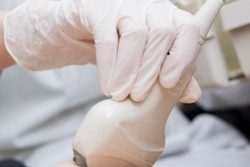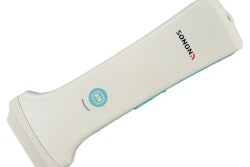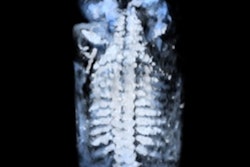The study led by Dr. Richard Barr, PhD, a professor of radiology at Northeast Ohio Medical University in Rootstown, included 90 patients undergoing diagnostic ultrasound due to a palpable mass, an abnormality on mammography, a follow-up study, or breast discharge.
Barr's group compared the diagnostic accuracy of a handheld ultrasound exam and a single-volume ultrasound exam using an automated breast volume scanner positioned over the area of concern. The group also evaluated whether there was a performance difference between sonographers and mammography technologists.
All patients underwent both exams; they were randomized to have either handheld or automated ultrasound first. In addition, the automated ultrasound exams were randomized between a sonographer and a mammography technologist, and the person performing the second study was blinded to the results of the first exam.
Kappa agreement for finding pathology between automated breast and handheld ultrasound was 0.831, according to the researchers. The agreement between the two modalities was nearly the same when automated ultrasound was performed by a mammography technologist (0.858) as when it was performed by a sonographer (0.803) -- although this result was not statistically significant (p = 0.47).
There was no statistical difference between readers for the area under the curve (AUC) for lesion characterization for both automated and handheld ultrasound, leading Barr's group to conclude that handheld and automated breast ultrasound performed by a mammography technologist or a sonographer are statistically equivalent for diagnostic workup.



















